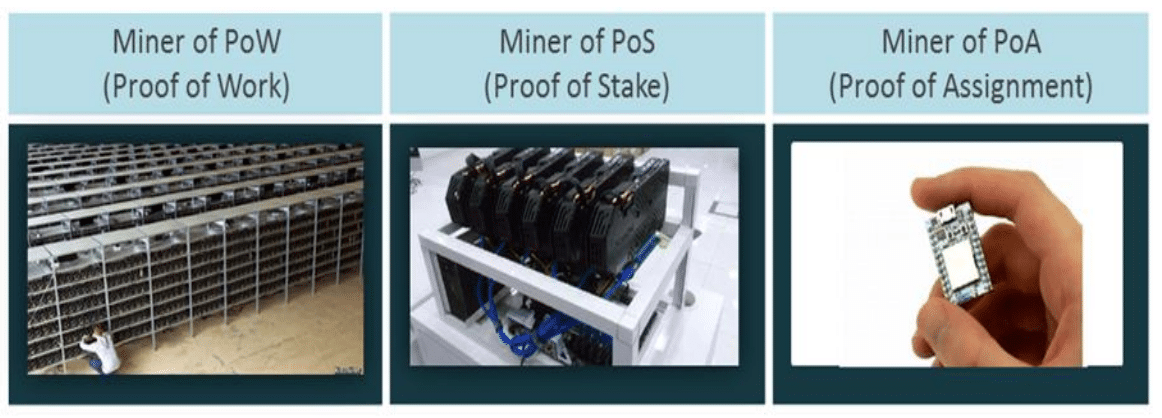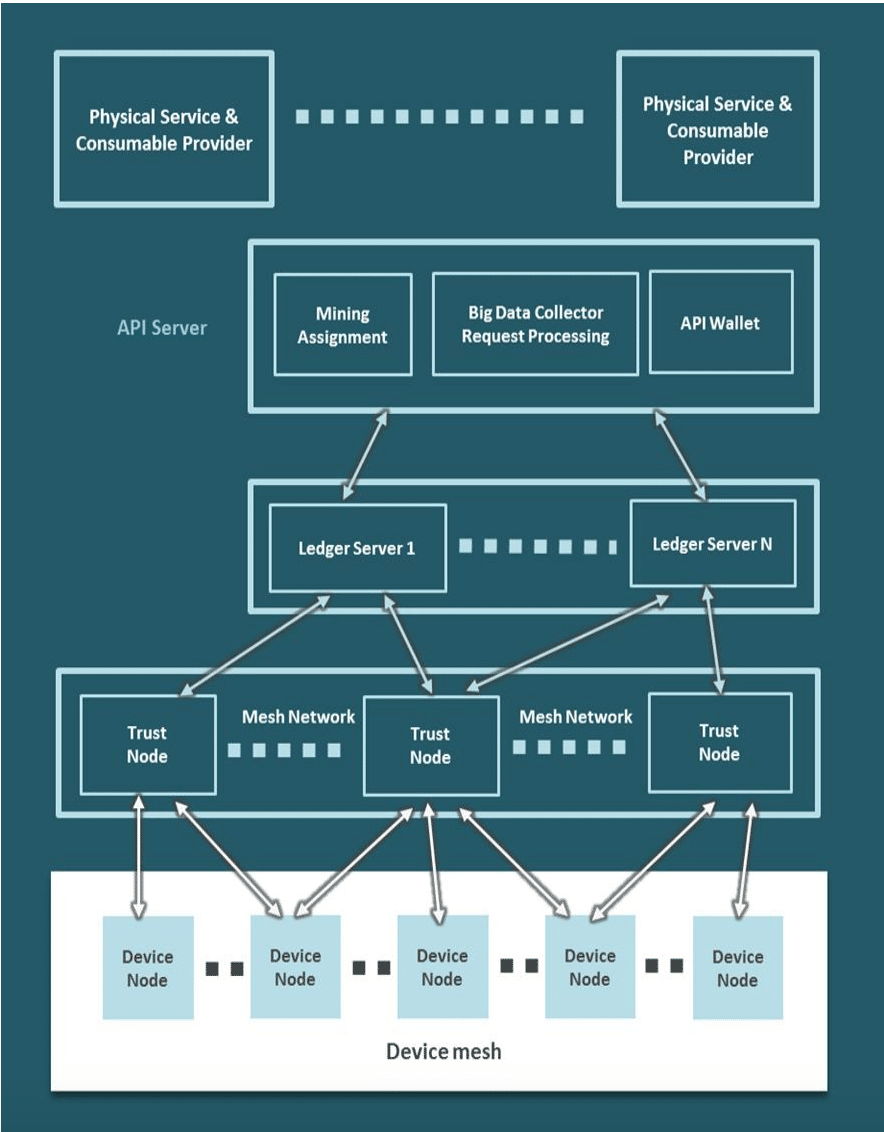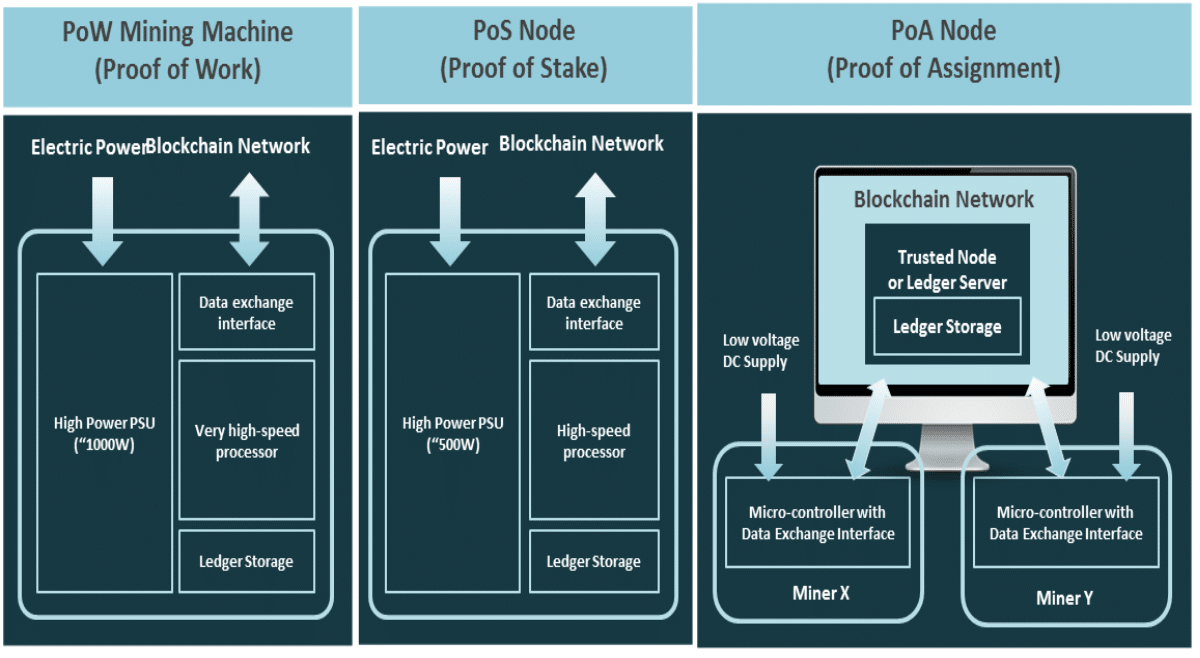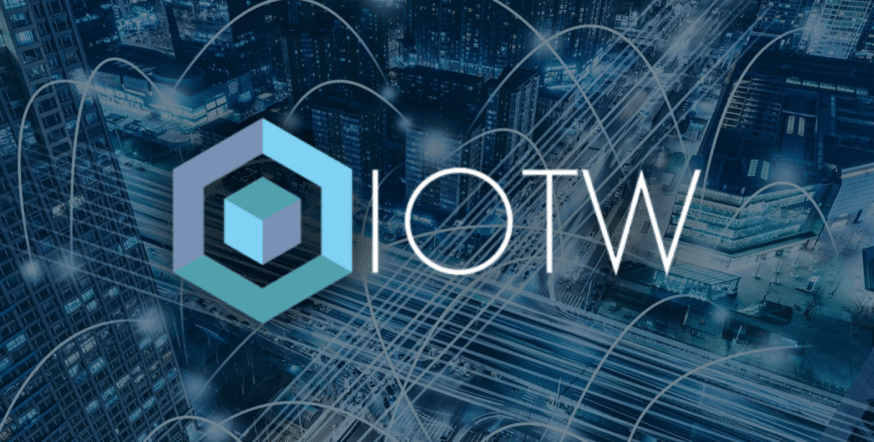The Internet of Things (IoT) industry brings mixed feelings.
In one camp, you have the futurists that eagerly anticipate a world where life is made easier and more convenient thanks to a network of machines that take care of everything from fridges re-ordering our favorite foods to voice-activated home temperature sensors that keep our utility bills low.
In another camp, you have the group of people creeped out by how personalized IoT devices are getting and are borderline terrified of a dystopian future where the government spies on our every move and location.
Regardless, entrepreneurship in the space isn’t easy. IoT is itself a relatively new industry, and many entrepreneurs in the space are looking to blockchain to help facilitate scalability and network incentivization.

The following conversation covers the IoT industry in broad strokes, compares and contrasts one of the project’s main competitors (IOTA), and explores the technical foundation needed for a global and highly efficient IoT network.
Enjoy!
There is a common sentiment that the intersection between IoT and Blockchain is either “too early” or just a dysfunctional mess. How would you address this?
I do not agree. I believe that if the technology is right, blockchain and IOT can work well together. Many IoT devices have limited computational power and memory. The blockchain technology needs to work around those limitations.
IOTW’s Proof of Assignment and Micro-mining allow IoT devices to mine without changing the hardware. The IOTW network can purchase data across different types of IoT devices with blockchain rewards and IOTW tokens from end users.
The current networks that support IoT devices do not allow proper utilization of data that is generated by these devices. Manufacturers of IoT devices are unable to access data across a wide spectrum of devices.
Combining blockchain with IoT will give manufacturers access to this unharnessed data that can be used for improving upon existing technologies. Additionally, combining blockchain and IoT would open up possibilities for decentralized applications to be developed for IoT devices and greatly improve upon the existing utility of these devices.
People familiar with IoT and blockchain have likely heard about IOTA, one of your main competitors. What is IOTA doing right?
IOTA did do good promotion and is partnering with some big companies. They did find a few IoT applications which have micro-computer inside and are doing porting, but volume is very limited.
In 2015, IOTA adopted DAG, which is an interesting new technology that has its own merits and shortfalls. For instance, since there are no blocks in a DAG, there isn’t a scaling problem.
In fact, the network performs better as there are more users, so if IOTA is able to achieve mass adoption they won’t have the same scaling problems as Bitcoin for instance.
Additionally, there is no transaction fee on the IOTA network which significantly reduces costs, however since they also use PoW, those costs come in the form of hardware upgrades and energy consumption.
What are some shortfalls of IOTA or the Tangle?
IOTA needs to put a micro-computer with a few Gigabytes of RAM inside the IOT devices. Most IOT devices do not have those hardware resources. Therefore, the application is limited.
Second, IOTA is slow. Right now it is about 3 transactions per second and it takes several minutes to process. Therefore, it cannot do instant transactions, which is critical for many IoT devices.
How is IOTW different/better?
IOTW is a real blockchain and it allows any connected device to mine. IOTW also has several advantages over other networks.
Primarily, IOTW allows users of existing IoT devices to generate passive income in the form of tokens through our micro mining protocol. Being able to mine cryptocurrency on any connected device greatly solves the problems plaguing the cryptocurrency mining industry.

We have also developed our own consensus algorithm called Proof of Assignment that gives every device on the network equal opportunity to mine tokens. PoA solves the problems associated with PoW and PoS as it is a greener and fairer way of mining cryptocurrency.
Other IoT networks require several hardware upgrades to the devices to connect to the blockchain, however, our network requires a simple software upgrade thereby reducing the friction associated with using blockchain on IoT devices.
This greatly eases the implementation on the backend and is convenient for manufacturers, and on the end user side, there is no friction at all.
Our witnessing protocol, that requires an external validator to validate transactions, adds a dual layer of security to make the network much more secure than other IoT networks.
Currently, on our network, we have tested speeds of 3k TPS, which is much faster than most blockchain networks and traditional payment methods.
What’s one thing about your project not many people understand?
Our blockchain technology is more secure than most blockchain technologies out there.
Even with way over 51% of nodes being compromised, IOTW blockchain will work just fine. Since transaction ledger is not being stored in micro-mining machines (IoT devices), the 51% hostile takeover does not apply to this network layer.

In the IOTW blockchain ecosystem, the key to security is to protect the ledger from attacks at the trusted server network layer. Theoretically, trusted servers are already most robust against attacks. In addition, we are developing another algorithm to improve the security of the IOTW blockchain ecosystem.
Instead of validating a new transaction by just verification by IoT micro-mining and validating by trusted nodes, at least one witness who is not the mining node will be invited to witness the new transaction using a digital signature (private/public key pair).
With such implementation, 51% attack needs to simultaneously attack both the transaction ledger as well as the associated blockchain of witnesses to gain hostile takeover. Hence, this will greatly improve the security of the IOTW blockchain ecosystem.
Security of the system will be growing with time as more devices get connected. We have a patented witness protocol that assumes a few devices from the pool of available ones will be picked up to sign and verify the transaction blocks.
The block will be considered valid only if all devices will return the same coherent verification. In case of not coherent verification provided, all devices chosen for this verification will be blacklisted and removed from the pool.
When can we expect to see a functional blockchain IoT solution?
IOTW blockchain is functional today. Deployment applications will be 6 months after ICO
Does centralization in IoT pose any significant problems? If so, how?
Decentralization means no middleman and normally means lower cost and higher efficiency. Furthermore, small businesses might survive easier since they can have a direct relationship with their customers.
If IoT devices are very centralized, big data benefits will only go to a few companies or just go to the government.
Could you explain your POA algorithm and micromining?
POA is multi-level priority queuing method. In the simplest way, it is a round-robin queuing. When a device finishes mining, it goes back to the end of the line to queue again. Therefore, there is no competition likes PoW, and that it does not burn excess power. Not like PoS which is a “richer get richer” game since it was designed to encourage end node to purchase tokens.

In order not to modify IOT hardware and allow them to mine, the ledger actually is outside the IOT device. IOT devices only need to download a small piece of firmware. One ledger can support a few hundred and up to 1 thousand IOT devices. IOT devices verify and sign the block. According to the blockchain, the devices verify and sign the block will get blockchain rewards.

Let’s entertain this idea. Fast-forward 50 years. Everyone has a smart fridge, speaker, home, etc. The world is ruled by a tech/gov oligarchy and knows your every move. Is this fear many people have realistic? How can we avoid this sort of dystopia?
The same scenario will happen regardless whether there is blockchain or not. General human behavior will be well analyzed. In a good way, action from an industry or government can make human society more efficient and individuals happier. In a bad way, can control the society more easily. The best thing you can do is elect the right politician and vote for the governing law to protect us whenever available.
What are some of the biggest challenges in cryptocurrency entrepreneurship?
Many projects were launched well before. Many of the project’s team does not have industrial mass shipment or mass deployment experience. The token price dropped significantly and some projects died shortly after ICO.
This history makes token buyers very skeptical towards many new projects. A massive effort in marketing is needed to overcome this issue.
So, you guys are doing an ICO soon. What utility does your token have for average investors? What type of person are you looking to participate in your ICO? What’s your perfect customer?
IOTW can purchase goods and services from IOTW marketplace. Most of the IOTW enabled IoT device manufacturers will accept IOTW as payment for up-selling.
Many other end products brands, media, overstocks etc. will also accept IOTW as payment since IOTW nodes will provide another set of new customers. The best customers are the common households who will purchase IOTW enabled devices.
Hypothetical situation. Consider me unconvinced I should participate in the IOTW ICO. I haven’t done much research for IOTW specifically, but I’m jaded with the ICO landscape. I think it would be better to wait until a product launches instead of exposing myself to risk at the time of ICO. What could you tell me to change my mind?
We are a team who have experience of over 20 IPOs cumulatively. We have the experience to deploy real projects. We have the potential to become the highest deployment blockchain node projects in the world. If the product fully launches, the price of the token will be way higher since just count IOTW alpha sites, it can reach hundreds of thousands shippable units, which is already a very big deal.
I see that China and USA are not supported for the ICO. Could you explain how that changed your ICO marketing strategy?
We only promote our technology in China but not our ICO. In the US, our promotion is no different from any other countries but we only accept corporations to purchase tokens.
Anything else you’d like our readers to know?
Total blockchain market cap is 200B which is less than Apple’s or Google’s single company market cap. If blockchain can penetrate many households, more people will learn about blockchain.
More money will be invested into blockchain projects. Blockchain industry will grow and blockchain decentralized benefit can be enjoyed by common people.
Thank you!
Never Miss Another Opportunity! Get hand selected news & info from our Crypto Experts so you can make educated, informed decisions that directly affect your crypto profits. Subscribe to CoinCentral free newsletter now.










